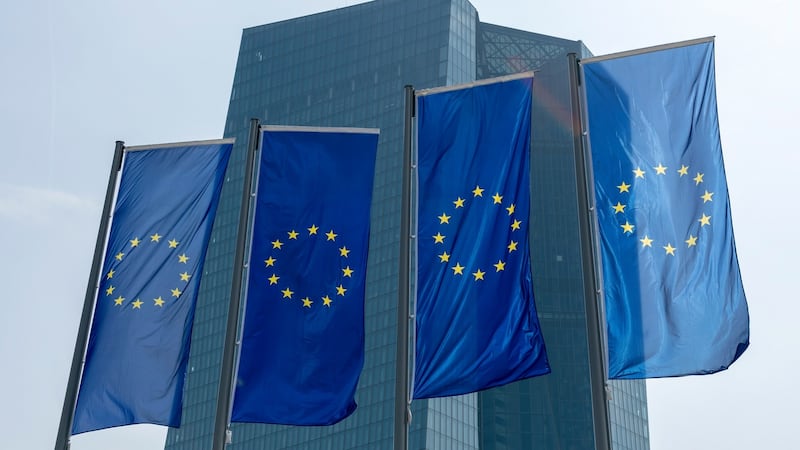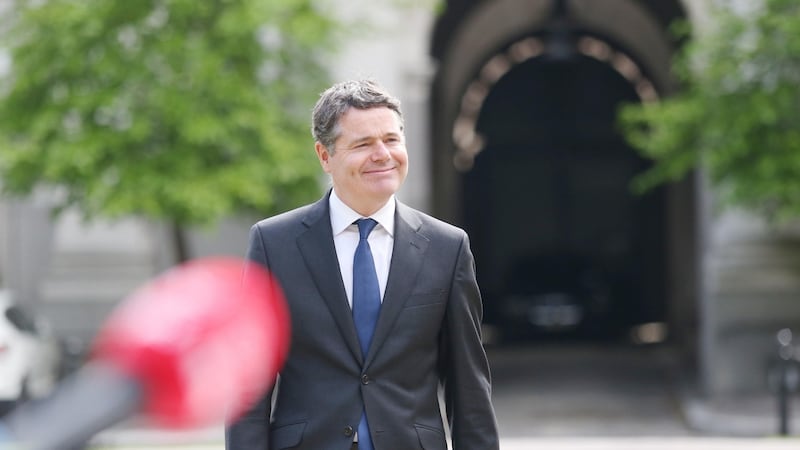The Government finances have been turned on their head by Covid-19. An expected surplus of taxes over spending of around €2.8 billion for this year is now a deficit of €23 billion to €30 billion. And there are calls for the Government to borrow – and spend – even more to fight the economic fall-out from the pandemic. But when it comes to borrowing, how much is too much?
1. Where we stand
The Government’s spring economic update said that on a plausible scenario, the budget deficit could be €23 billion this year, or €28 billion to €29 billion in a more pessimistic scenario. Recent ministerial statements suggest that expectations for the deficit this year have risen to €30 billion, not far off 10 per cent of expected GDP.



The actual cash amount the State needs to raise to bridge the gap between tax and spending is a bit lower than the headline deficit figure.
On the basis of the €23 billion deficit in the spring economic forecasts, the National Treasury Management Agency estimated that the cash exchequer borrowing requirement for 2020 would be €15.6 billion. However other significant previous borrowings fall due to be repaid this year – bonds are issued for a fixed period and must be repaid when they mature. The NTMA has estimated it needs total funding of €38 billion this year to both repay these maturing borrowings and fund the exchequer.
It has planned to pay for this via new long-term borrowing of around €22 billion, short-term borrowings of €5 billion and the rest from a run-down in cash balances, which started the year at some €16.5 billion.
The increased borrowing requirement now being signalled could push the amount the NTMA needs to fund this year towards €45 billion, likely meaning more will be raised on the markets. The planned return of some €2 billion this year from NAMA will also help.
2. The outlook
The central scenario in the Department of Finance’s forecasts sees GDP bouncing by 6.5 per cent next year after a 10.5 per cent fall this year. This is estimated to cut the deficit to 4.1 per cent of GDP, or just under €14 billion in cash terms.
With the 2020 figures under pressure, there is a risk that 2021 borrowing could also be higher and growth lower. At this remove, however, that is a near impossible call to make. Fortunately there are no redemptions of existing bonds due next year, so that provides some room for manoeuvre for the NTMA. There are significant redemptions of €12 billion in 2022, but overall redemptions in the next few years are well below 2017-2020.
3. Money for nothing ?
The low interest rates of recent years, driven by European Central Bank policy, have delivered a massive boost to the Irish exchequer, with the NTMA raising €80 billion since 2015 at an average rate of less than one per cent. This has seen more expensive borrowing being replaced by much cheaper funding. A few years ago we expected debt servicing to cost us close to €7 billion this year – in the event it will be around €4 billion.
Raising debt cheaply is a vital advantage for us now. Last week the NTMA raised €850 million for nine years, involving annual interest rate payments of just over €350,000, and €650 million for 30 years with repayments each year of slightly in excess of €5 million. As these are fixed rates, this is all locked in for the period of the loan. The NTMA on Thursday raised five-month borrowings at a negative interest rate and will use these short-term borrowings more actively this year. Ireland, and other EU countries, need the ECB to stay in the market to keep rates at these levels. With massive borrowings being undertaken by governments around the world, the risk is that any reduction in ECB buying would lead to a rise in borrowing costs, which have remained at extraordinarily low levels in recent years.
One point to remember is that while debt servicing costs are low, borrowings do, ,at some stage , have to be repaid. Typically borrowings are refinanced when the bond matures. We were fortunate to be in a high growth/low interest rate environment in recent years when maybe of the borrowings of the crisis years had to be refinanced. The NTMA will be conscious of not building up too many problems for the future – we just don’t know how interest rates will move in the years ahead and whether the period of super-low rates will continue.
Raising very long-term debt, such as the recent 30-year issue, is one way to avoid pressures in the next decade, though market sources believe that in this area the costs of raising debt are more vulnerable to increases in the months ahead.
4. The case for borrowing?
The traditional Keynesian approach is that the government needs to step in to fill a significant part of the gap caused by a collapsing economy. GDP this year will probably fall by some €40 billion, so the hole is big. Government spending supports demand – and will aim to keep many companies operating and incomes and jobs protected. Not intervening also means parts of the productive base of the economy would be wiped out.
5. What’s the limit?
There is no way to judge this exactly – and there is no doubt that rock bottom interest rates and ECB market support have changed the game. The Minister for Finance, Paschal Donohoe gave a hint of where he saw the limit in a Dáil speech this week, when he said there were constraints which were “budgetary, monetary and political”. Past experience has shown how quickly markets can change, he said “and so it is important that Ireland does not become an outlier.”
As many EU governments plan to raise borrowing to around 10 per cent of GDP, this suggests that this may be seen as a key marker by Ireland , if not a hard limit. The UK is aiming for borrowing of 15 per cent of GDP, though having its own central bank does give it more flexibility.
Not being an outlier means not becoming an obvious target if the ECB starts to reduce supports next year and markets start to get nervous and charge riskier countries more – already Italy’s bond rates are well above the average. Ireland does not want to be in the spotlight, if markets start to get nervous. Donohoe’s comments about monetary and political constraints may indicate he sees a limit to how long the ECB support in the market will last. It is politically controversial in some EU capitals and around the ECB council table and this could affect how long it continues beyond the end of this year.
The longer term implications of a recent ruling by the German constitutional court are also unclear, particularly in relation to how far the ECB will go to break its own previous guidelines on bond buying.
6. The duration question
A lot of this comes back to how the crisis develops. Professor Alan Barrett of the ESRI points out that rather than the amount we borrow, the key constraint is how long we need to borrow for. If the economy does start to recover next year, then higher tax revenues and reduced pressure on spending will cut the need for additional borrowing and start to bring the exchequer finances back on track. However if the economy remains in recession or stuck in a rut, then borrowing could remain high and start to create pressures and doubts among investors.
A related issued is to try to separate once-off and recurring spending commitments. Special wage and income subsidies are a once-off, but a higher level of unemployment is an ongoing cost. Some of the emergency health spending will be once-off, but the need for PPE and testing kits will persist most likely for some years at least. It is the recurring costs which often pose the greatest difficulty for the public finances, as eventually they must be paid for, either from the fruits of growth or higher taxes.
7. The European question
Will further help come from the EU? In terms of the budget, a new Franco/German proposal for a €500 million fund would distribute grants to member states, though it has still to be agreed and the basis for who would get what is not clear. Ireland might perhaps receive a single figure billion sum from such a pot – servicing the EU debt might add a little to our EU budget contributions on the other side, over a longer period of years. It is possible that the €500 billion scheme, if agreed, could in time expand.
For now, the key player remains the ECB. One issue for Ireland is how will it look in, say, a year’s time– might the ECB be looking to pull back at that stage, pushing borrowing costs higher, or will it still be fully in the market? What are the risks of wider euro zone tensions? This is where the question of which spending commitments are long term and what the deficit will look like in 2021 and 2022 become crucial. We don’t want to be exposed having to raise too much money if rates are rising.
There is a strong argument for the ECB to remain fully in the market. Many economists argue that it should, in fact, be prepared to do even more. UCD's Karl Whelan in a recent paper for the European Parliament said that the ECB could cut interest rates further or look at other ways to meet its price stability goals. It could, for example, lend funds to the EIB, he said, to boost investment across the EU.
The economics of the situation suggest ongoing and aggressive ECB action may be needed – but whether the politics will allow it is another question. Whelan points to the way the ECJ has interpreted the ECB's room for manoeuvre, as well as the German ruling, as potentially being important in limiting the ECB's actions. For now, Paschal Donohoe's comments suggest some caution – the State will borrow enormous amounts this year and into 2021, but the government will try to keep the Irish deficit and our rise in debt roughly in line with elsewhere in Europe. And then hope for the best.















